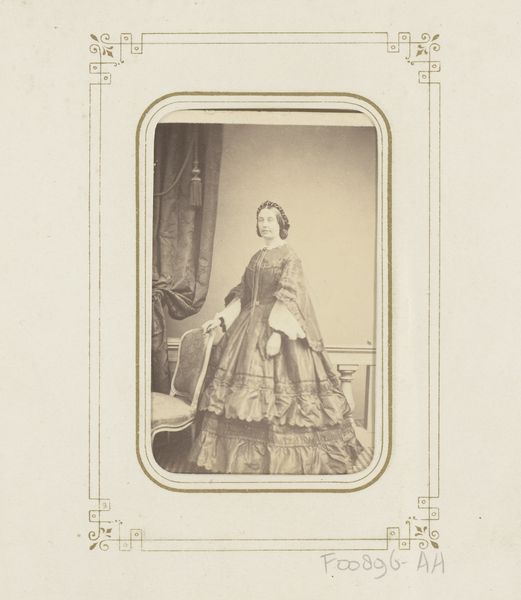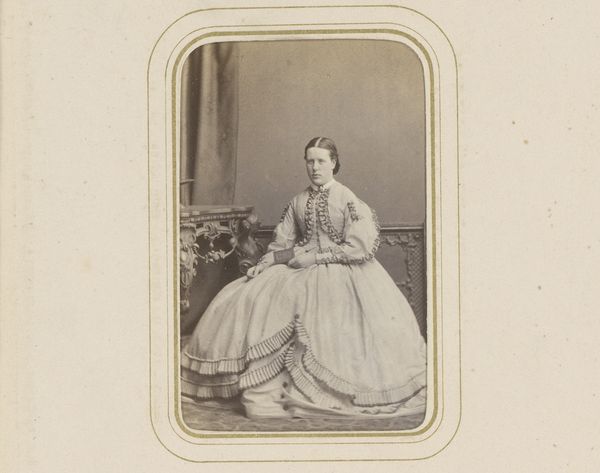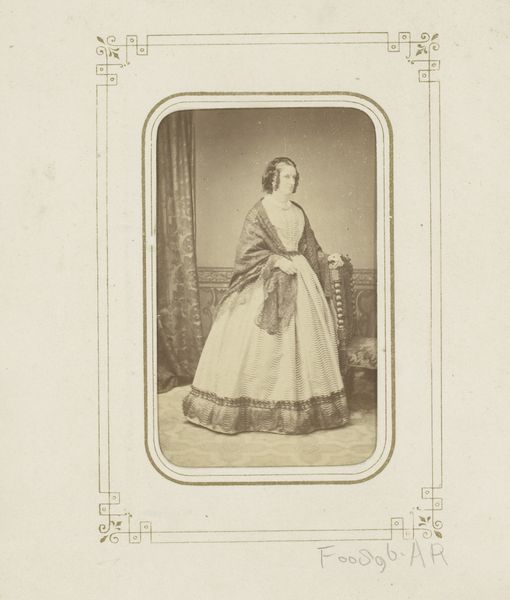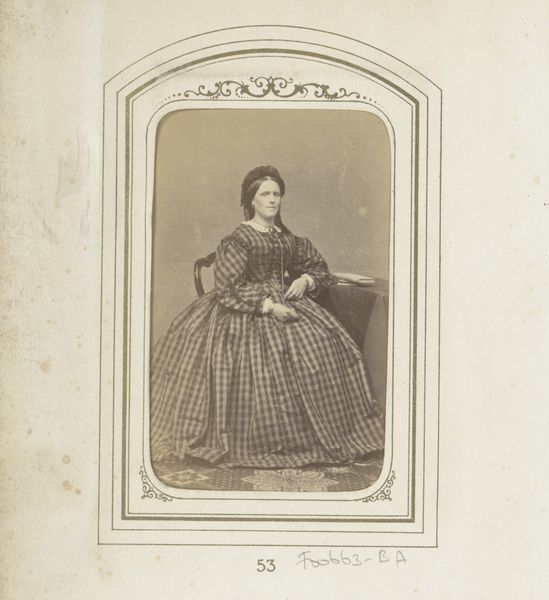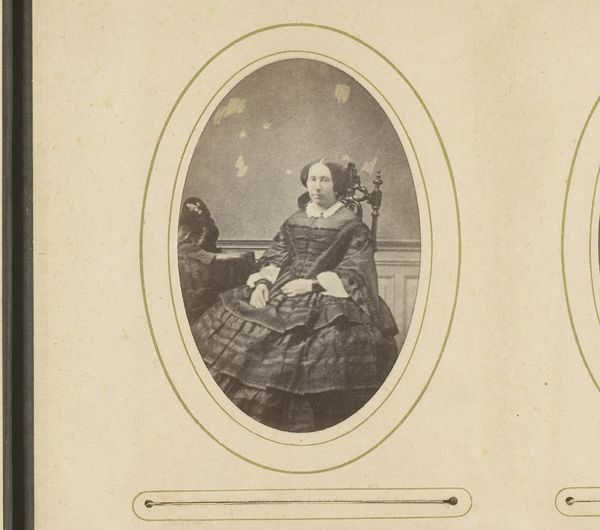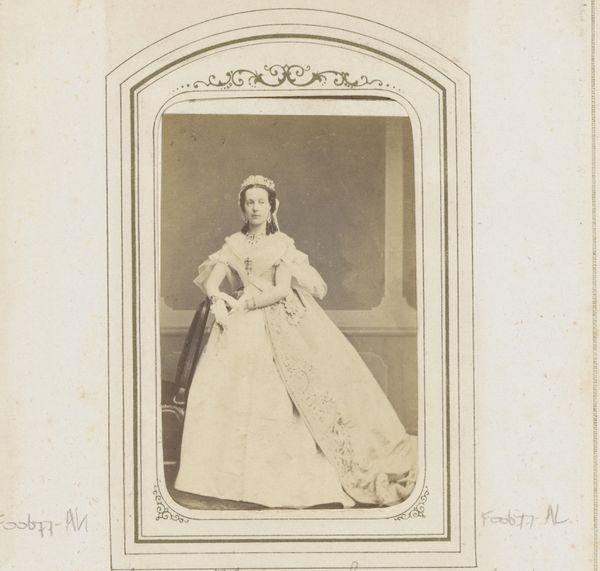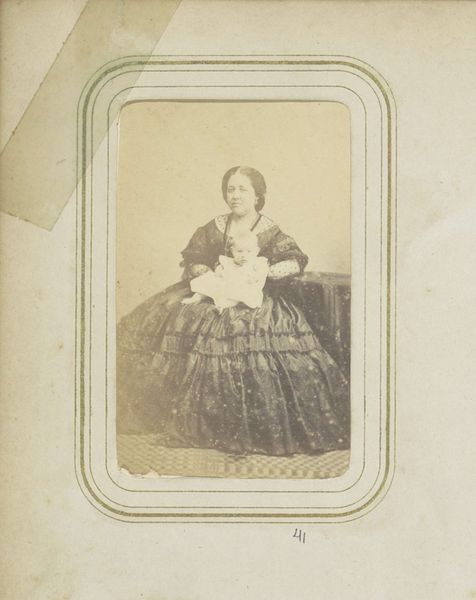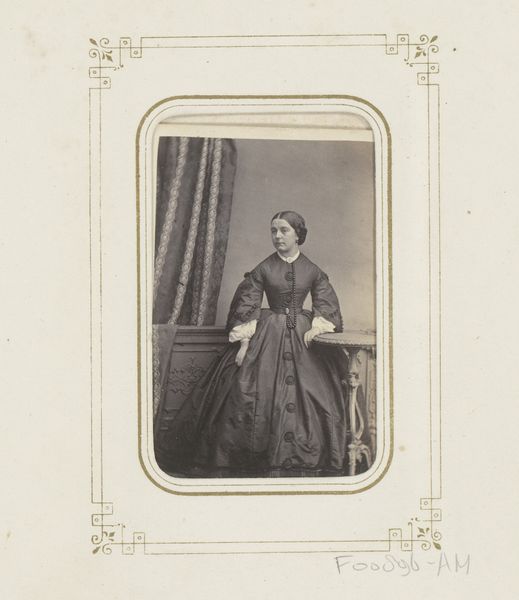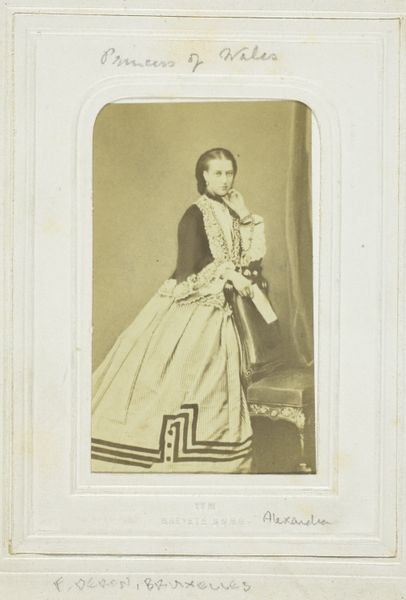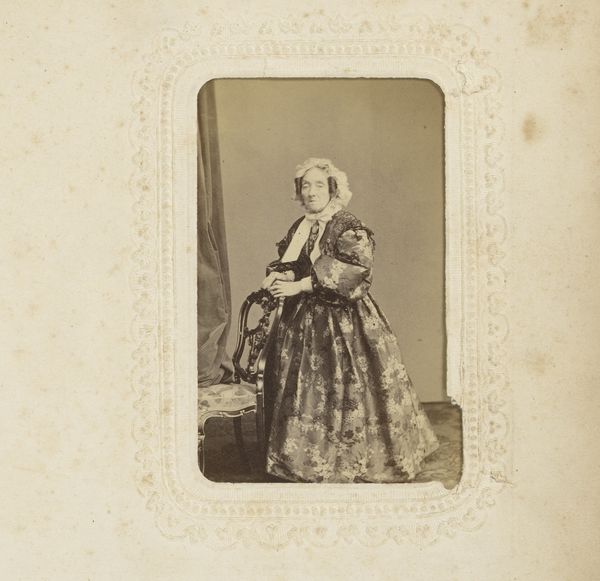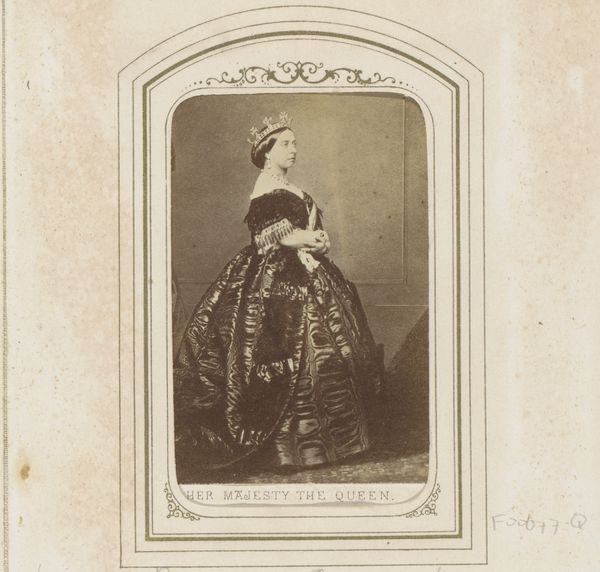
Dimensions: height 85 mm, width 53 mm
Copyright: Rijks Museum: Open Domain
Curator: This is an albumen print dating from around 1855 to 1870, titled "Portret van Marie Alexandrovna," though the photographer is, unfortunately, anonymous. My immediate sense is this feels so poised, and slightly melancholic, don’t you think? It's like a held breath, a captured moment of… something profound, or maybe just quiet endurance? Editor: It is indeed an incredibly captivating portrait. What I find compelling is how it represents the construction of identity through visual codes of the era. This portrait, and others of its time, participates in the consolidation of social hierarchies and ideals of womanhood—especially regarding aristocratic standards of beauty, posture, and dress. The framing, the light, and shadow all come together to craft a particular narrative about who this woman is meant to be. Curator: That makes me think, I mean, there's that intense gaze; almost defiant, but the floral arrangements, and the layers and layers of fabric say so much more. It’s this battle between control and opulence. Maybe the flowers are hinting at the ephemerality of beauty, or some buried sorrow, wouldn't you say? Editor: Precisely! There's a very deliberate dance between assertion and constraint happening within this image. It reflects the contradictions women like Marie Alexandrovna embodied. Limited agency despite privileged circumstances. These photographic technologies aided in widespread societal control and were part of solidifying very precise ways of viewing the world, gender, and class. How many times were these circulated as models of desired womanhood, right? Curator: Oh, endlessly! Think about the act of sitting still for a photograph in those days—pure torture, I’m sure! It’s a perfect symbol of female repression or restraint, don't you think? I like the historical tidbit, though: Marie, a prominent woman whose representation was highly curated—and yet, there's something incredibly human peeking through. Editor: Absolutely, and that is what makes it compelling. She isn’t merely a passive object. Despite the structural forces at play, there’s a lingering sense of individual experience present. We’re seeing echoes of these visual mechanisms replicated through today in the construction of political messaging and how particular communities continue to be framed or overlooked by media outlets. This feels like a mirror across time. Curator: Very poignant. These historical portraits truly keep talking back to us. Editor: Indeed. There's still much to unpack when considering the enduring power dynamics inherent within modes of seeing.
Comments
No comments
Be the first to comment and join the conversation on the ultimate creative platform.
